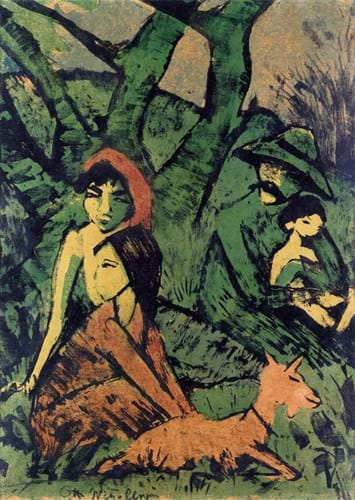1. An Elizabethan tiger jug
London firm The Pedestal is selling the contents of William H Stokes Antiques today (March 4) at Bingham Hall in Cirencester – the town where the shop traded for many years from its 17th century property in Dollar Street.
Among the lots is this 8in (20cm) high Elizabethan tiger jug mounted in unmarked silver. It is estimated at £300-500. The lot, and the auction, can be viewed on thesaleroom.com.
2. Eric Slater coloured woodcut
Mastering the Japanese technique of woodblock printmaking, Eric Slater (1896-1963) produced more than 30 colour woodcuts between 1926 and the outbreak of the Second World War.
Dubbed one of the 20th century’s ‘lost British artists’, Slater established an international reputation exhibiting his prints widely in Canada, Australasia, Austria and South Africa. But, the death of his mother in 1938, the outbreak of war and changing fashions, ended his career and he died in obscurity 25 years later.
Many depict scenes near his home and studio in Seaford, East Sussex, where he lived for most of his adult life. This 10 x 11½in (25 x 29cm) coloured woodcut Cuckmere Haven (1929) is guided at £100-200 in a sale on March 5 at Special Auction Services of Newbury in Berkshire. The lot can be viwed on thesaleroom.com.
3. Otto Mueller lithograph
Swann Auction Galleries is to sell a major selection of German Expressionist works from one of the movement’s most important collections. The extraordinary gathering of 160 prints, paintings and drawings that will be offered on March 5 at Swann come from the family of Ismar Littmann (1878-1934), a lawyer in the city of Breslau (Wroclau in Poland).
Littmann’s taste was for the avant-garde artists working and training at the Breslau Academy of Fine and Applied Arts. He bought many works directly from Otto Mueller (1874-1930) and Heinrich Tischler (1892-1938), both instructors at the academy.
Among the lots is Lagernde Zigeunerfamilie mit Ziege, a colour lithograph by Otto Mueller from 1926-27, estimated at $30,000
4. Two John Constable’s sketches

Possibly a preparatory study for Jaques and the Wounded Stag, c.1832-5, one of two John Constable’s sketches estimated at £5000-8000 each.
Two previously unpublished studies by John Constable (1776-1837), believed to have been bought in 1951 for £3, will go under the hammer at Chiswick Auctions’ British & European Fine Art in west London on March 6. The small compositional drawings were found in a dusty cardboard box and belong to Tam Fry, the son of the late playwright Christopher Fry.
A woodland glade, pictured here, has been identified as possibly a preparatory study for Jaques and the Wounded Stag, c.1832-5. This 47 x 77mm pen and brown ink on wove writing paper carries an estimate of £5000-8000. The other study, 64 x 83mm, also of a woodland glade, has an identical guide. The lots can be viewed on thesaleroom.com.
5. A Brussels lace fan
This ornate Brussels lace fan, worked with a coat of arms, is a leading lot in a sale dedicated to antique fans at Tennants of Leyburn in North Yorkshire on March 9.
A handwritten note with the lot suggests the arms are those of Princess Annie de Lusignan.
The lace leaf is mounted on pierced and gilded mother-of-pearl sticks, the ribs with gauze painted violets and forget-me-nots. The monture dates to c.1900 while the lace is c.1880s.
Estimated £1200-2000, the auction can be viewed online at thesaleroom.com.
6. Charles II beadwork mirror
This Charles II beadwork mirror is guided at £2500-3500 in The Fine Sale at Cheffins of Cambridge on March 6-7.
The border is set within a 2ft 4in x 22in (73 x 57cm) chinoiserie decorated frame and shows the king and his wife Catherine of Braganza under marital canopies, with a palace to the arch and flowering shrubs, birds and insects.
Beadwork, like needlework, was produced in the 17th century by both young girls and professionals, with coloured beads imported from Venice and Amsterdam as early as the 1630s.
It can be viewed on thesaleroom.com.












